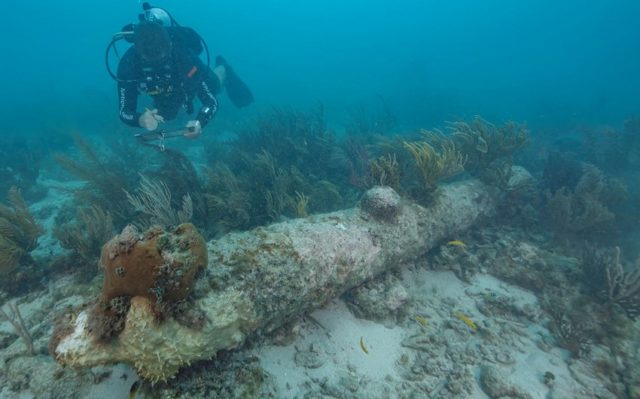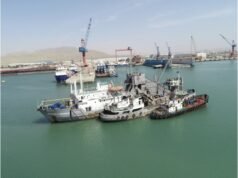The remains of a British warship that ran aground and marooned hundreds of crew members on an uninhabited island nearly three centuries ago have been identified off the coast of Florida, Report informs referring to The Telegraph.
Archaeologists have verified the wreckage is that of the HMS Tyger, which was abandoned by its crew in 1742 who escaped in a dramatic sea voyage.
Officials with the National Park Service who identified the wreckage said they had recovered five cannon and log books.
HMS Tyger is believed to have ran aground on the reefs of the Dry Tortugas while on patrol in the War of Jenkins Ear between Britain and Spain.
Remains of the ship, that was built in 1647, were first located in 1993 but the new research uncovered what experts said was definitive evidence.
“Archaeological finds are exciting, but connecting those finds to the historical record helps us tell the stories of the people that came before us and the events they experienced,” said James Crutchfield, the Dry Tortugas National Park manager.
“This particular story is one of perseverance and survival. National parks help to protect these untold stories as they come to light.”
After HMS Tyger ran aground approximately 300 members of the crew somehow managed to endure harsh conditions for 66 days marooned on what is today Garden Key, 80 miles west of Key West.
They erected the first fortifications on the island, more than 100 years before Fort Jefferson, which now dominates the island.
Eventually, the crew burned the remains of the Tyger to ensure its guns did not fall into enemy hands, and used pieces of salvaged material to create makeshift craft that they used to escape and make it to Port Royal, Jamaica, 700 miles away.
Another sunken British ship, the HMS Fowey, lies within Florida’s Biscayne National Park and is managed between the US government and Britain’s Royal Navy.
Josh Marano, the maritime archaeologist who led the team that made the discovery said: “This discovery highlights the importance of preservation in place as future generations of archaeologists, armed with more advanced technologies and research tools, are able to re-examine sites and make new discoveries.”







